https://ebookmass.com/product/waste-biorefinery-
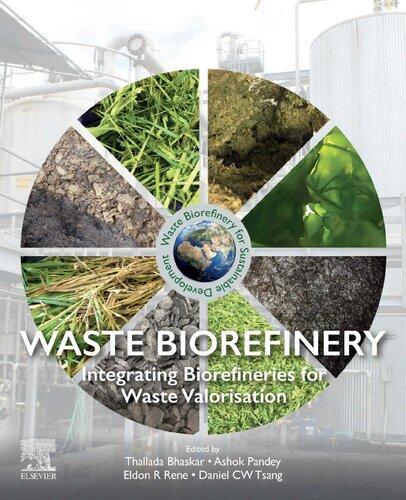
More products digital (pdf, epub, mobi) instant download maybe you interests ...
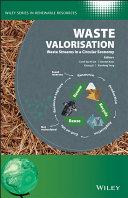

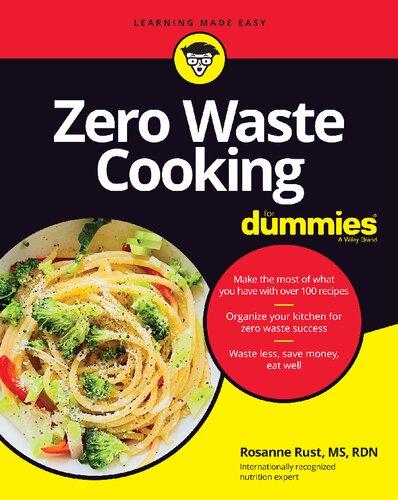
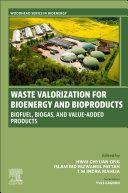
Waste Valorisation: Waste Streams in a Circular Economy
Carol Sze Ki Lin
https://ebookmass.com/product/waste-valorisation-waste-streamsin-a-circular-economy-carol-sze-ki-lin/
Advanced Materials from Recycled Waste Sarika Verma
https://ebookmass.com/product/advanced-materials-from-recycledwaste-sarika-verma/
Zero Waste Cooking For Dummies 1st Edition Rosanne Rust
https://ebookmass.com/product/zero-waste-cooking-for-dummies-1stedition-rosanne-rust/
Waste Valorization for Bioenergy and Bioproducts Hwai
Chyuan Ong
https://ebookmass.com/product/waste-valorization-for-bioenergyand-bioproducts-hwai-chyuan-ong/
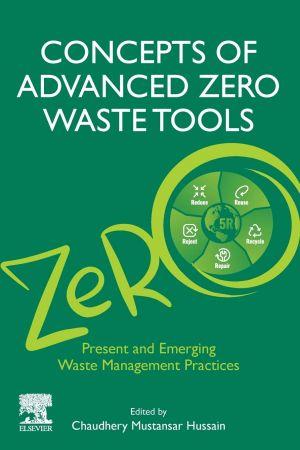
Concepts of Advanced Zero Waste Tools: Present and Emerging Waste Management Practices Chaudhery Mustansar Hussain
https://ebookmass.com/product/concepts-of-advanced-zero-wastetools-present-and-emerging-waste-management-practices-chaudherymustansar-hussain/
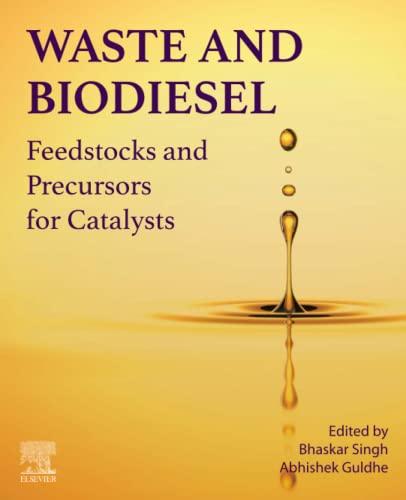
Waste and Biodiesel: Feedstocks and Precursors for Catalysts Bhaskar Singh And Abhishek Guldhe (Eds.)
https://ebookmass.com/product/waste-and-biodiesel-feedstocks-andprecursors-for-catalysts-bhaskar-singh-and-abhishek-guldhe-eds/

Sustainable Metal Extraction from Waste Streams Chauhan
https://ebookmass.com/product/sustainable-metal-extraction-fromwaste-streams-chauhan/
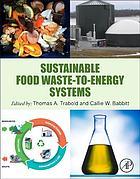
Sustainable food waste-to-energy systems Babbitt
https://ebookmass.com/product/sustainable-food-waste-to-energysystems-babbitt/

Biomass, Biofuels, Biochemicals: Circular Bioeconomy: Technologies for Waste Remediation Sunita Varjani
https://ebookmass.com/product/biomass-biofuels-biochemicalscircular-bioeconomy-technologies-for-waste-remediation-sunitavarjani/

Editedby ThalladaBhaskar BiomassConversionArea, MaterialResourceEfficiencyDivision,
CSIR-IndianInstituteofPetroleum,Dehradun,India
AshokPandey CentreforInnovationandTranslationalResearch,
CSIR-IndianInstituteofToxicologyResearch,Lucknow,India
EldonR.Rene
IHEDelftInstituteforWaterEducation,Delft,TheNetherlands
DanielC.W.Tsang DepartmentofCivilandEnvironmentalEngineering, TheHongKongPolytechnicUniversity,HongKong
Elsevier
Radarweg29,POBox211,1000AEAmsterdam,Netherlands
TheBoulevard,LangfordLane,Kidlington,OxfordOX51GB,UnitedKingdom 50HampshireStreet,5thFloor,Cambridge,MA02139,UnitedStates
Copyright © 2020ElsevierB.V.Allrightsreserved.
Nopartofthispublicationmaybereproducedortransmittedinanyformorbyanymeans,electronicor mechanical,includingphotocopying,recording,oranyinformationstorageandretrievalsystem,without permissioninwritingfromthepublisher.Detailsonhowtoseekpermission,furtherinformationaboutthe Publisher’spermissionspoliciesandourarrangementswithorganizationssuchastheCopyrightClearance CenterandtheCopyrightLicensingAgency,canbefoundatourwebsite: www.elsevier.com/permissions
ThisbookandtheindividualcontributionscontainedinitareprotectedundercopyrightbythePublisher (otherthanasmaybenotedherein).
Notices
Knowledgeandbestpracticeinthis fieldareconstantlychanging.Asnewresearchandexperiencebroaden ourunderstanding,changesinresearchmethods,professionalpractices,ormedicaltreatmentmaybecome necessary.
Practitionersandresearchersmustalwaysrelyontheirownexperienceandknowledgeinevaluatingandusing anyinformation,methods,compounds,orexperimentsdescribedherein.Inusingsuchinformationor methodstheyshouldbemindfuloftheirownsafetyandthesafetyofothers,includingpartiesforwhomthey haveaprofessionalresponsibility.
Tothefullestextentofthelaw,neitherthePublishernortheauthors,contributors,oreditors,assumeany liabilityforanyinjuryand/ordamagetopersonsorpropertyasamatterofproductsliability,negligenceor otherwise,orfromanyuseoroperationofanymethods,products,instructions,orideascontainedinthe materialherein.
LibraryofCongressCataloging-in-PublicationData
AcatalogrecordforthisbookisavailablefromtheLibraryofCongress
BritishLibraryCataloguing-in-PublicationData
AcataloguerecordforthisbookisavailablefromtheBritishLibrary
ISBN:978-0-12-818228-4
ForinformationonallElsevierpublicationsvisitourwebsiteat https://www.elsevier.com/books-and-journals
Publisher: SusanDennis
AcquisitionsEditor: KostasKIMarinakis
EditorialProjectManager: EmeraldLi
ProductionProjectManager: SelvarajRaviraj
CoverDesigner: MilesHitchen
TypesetbyTNQTechnologies
Contributors
RabiaAbad SchoolofAppliedSciences,TheUniversityofHuddersfield,Huddersfield,United Kingdom
AbdelrahimAbusafa ChemicalEngineeringDepartment,An-NajahNationalUniversity,Nablus, Palestine
MortazaAghbashlo DepartmentofMechanicalEngineeringofAgriculturalMachinery,Faculty ofAgriculturalEngineeringandTechnology,CollegeofAgricultureandNaturalResources, UniversityofTehran,Karaj,Alborz,Iran
AsamAhmed DivisionofSystems,Power&Energy,JamesWattSchoolofEngineering, UniversityofGlasgow,Glasgow,UnitedKingdom
MaherAl-Jabari RenewableEnergyandEnvironmentResearchUnit,MechanicalEngineering Department,PalestinePolytechnicUniversity,Hebron,Palestine
MariaAlexandri LeibnizInstituteforAgriculturalEngineeringandBioeconomyPotsdam, Potsdam,Germany
A.K.M.KaziAurnob DepartmentofChemicalEngineering,BangladeshUniversityofEngineeringandTechnology,Dhaka,Bangladesh
AyanBanerjee MaterialResourceEfficiencyDivision,CSIR-IndianInstituteofPetroleum, Dehradun,Uttarakhand,India;AcademyofScientificandInnovativeResearch(AcSIR),New Delhi,India
ShishirKumarBehera IndustrialEcologyResearchGroup,SchoolofChemicalEngineering, VelloreInstituteofTechnology,Vellore,TamilNadu,India
LaurentBelard NaturePlast,Ifs,France
StellaBezergianni ChemicalProcess&EnergyResourcesInstitute-CPERI,CentreforResearch &TechnologyHellasCERTH,Thessaloniki,Greece
ThalladaBhaskar MaterialResourceEfficiencyDivision,CSIR-IndianInstituteofPetroleum, Dehradun,Uttarakhand,India;AcademyofScientificandInnovativeResearch(AcSIR),New Delhi,India
NilutpalBhuyan DepartmentofEnergy,TezpurUniversity,Tezpur,Assam,India
HanifA.Choudhury DepartmentofChemicalEngineering,TexasA&MUniversityatQatar, Doha,Qatar
LoukiaP.Chrysikou ChemicalProcess&EnergyResourcesInstitute-CPERI,Centrefor Research&TechnologyHellasCERTH,Thessaloniki,Greece
CaterinaCollLozano ImecalS.A.,La ´ lcudia,Valencia,Spain
SutapaDas DepartmentofChemicalEngineering,IndianInstituteofTechnologyGuwahati, Guwahati,Assam,India
AntonioDavid-Moreno CIEMAT,Madrid,Spain
FrancescaDemichelis DIATI,PolitecnicodiTorino,Torino,Italy
ChenyuDu SchoolofAppliedSciences,TheUniversityofHuddersfield,Huddersfield,United Kingdom
CapucineDupont DepartmentofEnvironmentalEngineeringandWaterTechnology,IHEDelft InstituteforWaterEducation,Delft,TheNetherlands
AmerElhamouz ChemicalEngineeringDepartment,An-NajahNationalUniversity,Nablus, Palestine
SilviaFiore DIATI,PolitecnicodiTorino,Torino,Italy
Marı´aGarcı´aTorreiro AINIA-Centrotecnolo ´ gico,Paterna,Valencia,Spain
DebashishGhosh MaterialResourceEfficiencyDivision,CSIR-IndianInstituteofPetroleum, Dehradun,Uttarakhand,India;AcademyofScientificandInnovativeResearch(AcSIR),New Delhi,India
InmaculadaGonza ´ lezGranados BiomasaPeninsularS.A.,Madrid,Spain
VaibhavV.Goud DepartmentofChemicalEngineering,IndianInstituteofTechnologyGuwahati, Guwahati,Assam,India
JasneetGrewal EnzymeandMicrobialBiochemistryLaboratory,DepartmentofChemistry, IndianInstituteofTechnologyDelhi,HauzKhas,NewDelhi,India
NataliaHerreroGarcı ´ a BiomasaPeninsularS.A.,Madrid,Spain
HomaHosseinzadeh-Bandbafha DepartmentofMechanicalEngineeringofAgriculturalMachinery,FacultyofAgriculturalEngineeringandTechnology,CollegeofAgricultureandNaturalResources,UniversityofTehran,Karaj,Alborz,Iran
Shu-ChienHsu DepartmentofCivilandEnvironmentalEngineering,TheHongKongPolytechnicUniversity,Kowloon,HongKong,China
KaziBayzidKabir DepartmentofChemicalEngineering,BangladeshUniversityofEngineering andTechnology,Dhaka,Bangladesh
RupamKataki DepartmentofEnergy,TezpurUniversity,Tezpur,Assam,India
RavneetKaur Dr.B.R.AmbedkarNationalInstituteofTechnology,Jalandhar,Punjab, India;MaterialResourceEfficiencyDivision,CSIR-IndianInstituteofPetroleum,Dehradun,Uttarakhand,India
S.K.Khare EnzymeandMicrobialBiochemistryLaboratory,DepartmentofChemistry,Indian InstituteofTechnologyDelhi,HauzKhas,NewDelhi,India
KawnishKirtania DepartmentofChemicalEngineering,BangladeshUniversityofEngineering andTechnology,Dhaka,Bangladesh
Chor-ManLam DepartmentofCivilandEnvironmentalEngineering,TheHongKong PolytechnicUniversity,Kowloon,HongKong,China
MarcosLatorre-Sa ´ nchez ImecalS.A.,L’alcudia,Valencia,Spain
RaquelLebrero InstituteofSustainableProcesses,UniversityofValladolid,Valladolid, Spain;DepartmentofChemicalandEnvironmentalEngineering,UniversityofValladolid, Valladolid,Spain
YizeLi DivisionofSystems,Power&Energy,JamesWattSchoolofEngineering,Universityof Glasgow,Glasgow,UnitedKingdom
DiannanLu DepartmentofChemicalEngineering,TsinghuaUniversity,Beijing,China
MetteLu ¨ beck DepartmentofChemistryandBioscience-SectionforSustainableBiotechnology, Denmark
TiffanyM.W.Mak DepartmentofCivilandEnvironmentalEngineering,TheHongKong PolytechnicUniversity,Kowloon,HongKong,China
RiteshS.Malani CentreforEnergy,IndianInstituteofTechnology,Guwahati,Guwahati,Assam, India
N.ArulManikandan DepartmentofChemicalEngineering,IndianInstituteofTechnology Guwahati,Guwahati,Assam,India
VijayanandS.Moholkar CentreforEnergy,IndianInstituteofTechnology,Guwahati,Guwahati, Assam,India;DepartmentofChemicalEngineering,IndianInstituteofTechnology,Guwahati, Guwahati,Assam,India
HamidrezaMojab DepartmentofWaterResourceManagement,FacultyofCivilEngineeringand Geoscience,TechnicalUniversityofDelft,Delft,TheNetherlands
JoseL.MoltoMarin ExergyLtd.,Coventry,UnitedKingdom
SidraMunir SchoolofAppliedSciences,TheUniversityofHuddersfield,Huddersfield,United Kingdom
RaulMun ˜ oz InstituteofSustainableProcesses,UniversityofValladolid,Valladolid, Spain;DepartmentofChemicalandEnvironmentalEngineering,UniversityofValladolid, Valladolid,Spain
HanaMusinovic NATRUE,Brussels,Belgium
AhaduzzamanNahid DepartmentofChemicalEngineering,BangladeshUniversityofEngineeringandTechnology,Dhaka,Bangladesh
M.M.TejasNamboodiri DepartmentofBiosciencesandBioengineering,IndianInstituteTechnologyGuwahati,Guwahati,Assam,India
Abdul-SattarNizami CenterofExcellenceinEnvironmentalStudies(CEES),KingAbdulaziz University,Jeddah,MakkahProvince,SaudiArabia
JoseMiguelOliva-Dominguez CIEMAT,Madrid,Spain
DavidOvejero-Roncero ExergyLtd.,Coventry,UnitedKingdom
SantiagoPacheco-Ruiz VeoliaWaterTechnologiesTechnoCenterNetherlandsB.V./Biothane, Delft,TheNetherlands
KannanPakshirajan DepartmentofBiosciencesandBioengineering,IndianInstituteofTechnologyGuwahati,Guwahati,Assam,India
Hung-SuckPark DepartmentofCivilandEnvironmentalEngineering,UniversityofUlsan, Ulsan,RepublicofKorea
CeliaPascual InstituteofSustainableProcesses,UniversityofValladolid,Valladolid, Spain;DepartmentofChemicalandEnvironmentalEngineering,UniversityofValladolid, Valladolid,Spain
Andre ´ sPascual AINIA-Centrotecnolo ´ gico,Paterna,Valencia,Spain
Vı´ctorPe ´ rez InstituteofSustainableProcesses,UniversityofValladolid,Valladolid, Spain;DepartmentofChemicalandEnvironmentalEngineering,UniversityofValladolid, Valladolid,Spain
GregPerkins MartinParryTechnology,Brisbane,QLD,Australia;SchoolofChemical Engineering,UniversityofQueensland,Brisbane,QLD,Australia
DanielPleissner SustainableChemistry(ResourceEfficiency),InstituteofSustainableand EnvironmentalChemistry,LeuphanaUniversityofLu ¨ neburg,Lu ¨ neburg,Germany
G.Pugazhenthi DepartmentofChemicalEngineering,IndianInstituteofTechnologyGuwahati, Guwahati,Assam,India
Ame ´ lieRaingue ´ UrbaserS.A.,R&DandInnovationDepartment,Madrid,Spain
EldonRaj DepartmentofEnvironmentalandWaterTechnology,IHEDelftInstituteforWater Education,Delft,TheNetherlands
MohammadRehan CenterofExcellenceinEnvironmentalStudies(CEES),KingAbdulaziz University,Jeddah,MakkahProvince,SaudiArabia
EldonR.Rene DepartmentofEnvironmentalEngineeringandWaterTechnology,IHEDelftInstituteforWaterEducation,Delft,TheNetherlands
AliS.Reshad DepartmentofChemicalEngineering,IndianInstituteofTechnologyGuwahati, Guwahati,Assam,India
AlfredoRodrigo AINIA-Centrotecnolo ´ gico,Paterna,Valencia,Spain
RocioRoldan-Aguayo ExergyLtd.,Coventry,UnitedKingdom
AyeshaSadaf EnzymeandMicrobialBiochemistryLaboratory,DepartmentofChemistry,Indian InstituteofTechnologyDelhi,HauzKhas,NewDelhi,India
MeghaSailwal MaterialResourceEfficiencyDivision,CSIR-IndianInstituteofPetroleum, Dehradun,Uttarakhand,India;AcademyofScientificandInnovativeResearch(AcSIR),New Delhi,India
HassanSawalha RenewableEnergyandEnvironmentResearchUnit,MechanicalEngineering Department,PalestinePolytechnicUniversity,Hebron,Palestine AlbaSerna-Maza UrbaserS.A.,R&DandInnovationDepartment,Madrid,Spain
IzharHussainShah DepartmentofCivilandEnvironmentalEngineering,UniversityofUlsan, Ulsan,RepublicofKorea;InstituteofEnvironmentalSciencesandEngineering,SchoolofCivil andEnvironmentalEngineering,NationalUniversityofSciencesandTechnology,Islamabad, Pakistan
ShailendraKumarShukla CentreforEnergyandResourcesDevelopment,Departmentof MechanicalEngineering,IndianInstituteofTechnology(BHU),Varanasi,UttarPradesh,India
PushpendraKumarSinghRathore CentreforEnergyandResourcesDevelopment,Department ofMechanicalEngineering,IndianInstituteofTechnology(BHU),Varanasi,UttarPradesh,India
MarkSmith NATRUE,Brussels,Belgium
DebashisSut DepartmentofEnergy,TezpurUniversity,Tezpur,Assam,India
MeisamTabatabaei FacultyofPlantationandAgrotechnology,UniversitiTeknologiMARA (UiTM),ShahAlam,Selangor,Malaysia;MicrobialBiotechnologyDepartment,Agricultural BiotechnologyResearchInstituteofIran(ABRII),AgriculturalResearch,Education,andExtension Organization(AREEO),Karaj,Alborz,Iran;BiofuelResearchTeam(BRTeam),Karaj,Alborz, Iran;FacultyofMechanicalEngineering,HoChiMinhCityUniversityofTransport,HoChiMinh City,Vietnam
PankajTiwari DepartmentofChemicalEngineering,IndianInstituteofTechnologyGuwahati, Guwahati,Assam,India
Khanh-QuangTran Departmentofenergyandprocessengineering,NorwegianUniversityof ScienceandTechnology,Trondheim,Norway
DanielC.W.Tsang DepartmentofCivilandEnvironmentalEngineering,TheHongKongPolytechnicUniversity,Kowloon,HongKong,China
JackVandeVossenberg DepartmentofEnvironmentalEngineeringandWaterTechnology,IHE DelftInstituteforWaterEducation,Delft,TheNetherlands
EricD.vanHullebusch DepartmentofEnvironmentalEngineeringandWaterTechnology, IHEDelftInstituteforWaterEducation,Delft,TheNetherlands
CarolW.Wambugu DepartmentofEnvironmentalEngineeringandWaterTechnology,IHEDelft InstituteforWaterEducation,Delft,TheNetherlands
LeiWang DepartmentofCivilandEnvironmentalEngineering,TheHongKongPolytechnic University,Kowloon,HongKong,China;DepartmentofMaterialsScienceandEngineering,The UniversityofSheffield,Sheffield,UnitedKingdom
IanWatson DivisionofSystems,Power&Energy,JamesWattSchoolofEngineering,University ofGlasgow,Glasgow,UnitedKingdom
NeerjaYadav EnzymeandMicrobialBiochemistryLaboratory,DepartmentofChemistry,Indian InstituteofTechnologyDelhi,HauzKhas,NewDelhi,India
SimingYou DivisionofSystems,Power&Energy,JamesWattSchoolofEngineering,University ofGlasgow,Glasgow,UnitedKingdom
IrisK.M.Yu DepartmentofCivilandEnvironmentalEngineering,TheHongKongPolytechnic University,Kowloon,HongKong,China;GreenChemistryCentreofExcellence,Departmentof Chemistry,UniversityofYork,York,UnitedKingdom
Preface
Wherethereisrighteousnessintheheart,thereisbeautyinthecharacter.Whenthereis beautyinthecharacter,thereisharmonyinthehome.Whenthereisharmonyinthe home,thereisorderinthenation.Whenthereisorderinthenation,thereispeacein theworld.
A.P.J.AbdulKalam(1931 2015,AerospaceScientistandthe11thPresidentofIndia)
Rapidindustrialization,populationgrowth,unplannedexpansionofurbanzonesandinfrastructures,andinadequatepolicieshaveledtothemismanagementofsolidwasteindevelopednationsaswellaspoorercountriesinthedevelopingworld.Solidandliquidwaste,both thegenerationanddisposal,isatopicofmajorpublichealthandenvironmentalconcern. Moreoften,theseissuesareengenderedduetopoorwastecollectionsystems,lackofgovernmentalormunicipalservices,limitedbudget,weakmanagementpolicies,andlackofanefficientorganizationalinfrastructure,amongothers.Therefore,solidwastepilesupinstreets, backyards,alleys,andillegaldumpsites;peoplescavengethemtoearnaliving.Inmany countries,thesenonsanitarylandfillshavecausedaustereproblems,includingair,water,and soilpollution,andhasinducedthespreadofdisease-causingvectors.However,froma resourcerecoveryviewpoint,solidwastecanbeconsideredatreasurehouseofenormous wealth,whereinelectricitycanbeproducedbycombustion/incinerationofthesolidwaste foundinlandfills.Withtheadventofadvancedequipment,newprocesses,andbetterunderstandingofthemechanismsinvolvedinbiologicalandengineeringsciences,solidwastecan beefficientlytransformedintoenergy,fuels,andvalue-addedproducts.Thesolidwastes includeamixtureofbiological,combustible,andnoncombustiblematerialssuchasbiomass, grassclippings,wood,leaves,foodwaste,paper,cardboard,leatherproducts,plastics, beddingmaterials,resins,metals,glass,etc.
Byapplyingtheconceptsofpollutionprevention,resourcerecovery,andcleanerproduction, abiorefinerycanbedefinedasafacilitythatintegratesdifferentbiomassconversionprocess andequipmenttoproduceawiderangeofbiobasedproductssuchasbiofuels,power,heat, andplatformchemicals.Abiorefinerycanalsobeusedtorepresentastand-aloneprocess,a plantoragroupofsynergisticallylinkedfacilities,e.g.,ecoindustrialparks.Themainaimof
allthesefacilitiesaretointegrateandapplythebestengineering,biological,andmanagementpracticestominimizetheimpactonsolid,liquid,andgaseouswastesonhumanhealth andtheenvironment,convertwasteintoseveralvalue-addedproductstreams,andsustainably managetheexistingresources.Thus,theconceptofabiorefineryhasbeenconstantly evolving,andasystematictransformationofthefacilitieshasbeenenvisionedinrecent years.Forexample,theconventionalbiorefinery(first-gen)usesagriculturalbiomasstoproducebioethanolorbiodiesel,whereasthesecondandthirdGenbiorefineriesusesadvanced processesusinglignocellulosicbiomass,cereals,forestrybiomass,algalbiomass,waste gases,industrialsludges,oilresidues,foodwaste,andhigh-strengthwastewaterstreamsto producechemicalsandenergy.Dependingonthesourceandcharacteristicsoftherawmaterials,theprocessescanbeeitherchemical,biological,thermochemical,andmechanical,ora combinationoftheseprocesses.
Therefore,ascitizens,wehavetochangeourperspectivetoseehowwastecanbeusedasa secondaryresourcefortheproductionofenergyandothermaterials.Inordertomeetthe growingdemandoffuels,biofuelsareemergingasanalternativecleanfueltoreplacethe conventionalfossilfuels.AccordingtotheEuropeanUnion(EU)EnergyCommission,by theyear2020,theEUaimstohave10%ofthetransportfuelofeveryEUcountrycomefrom renewablesourcessuchasbiofuels.ThefuelsuppliersarealsorequiredtoreducethegreenhousegasintensityoftheEUfuelmixby6%by2020incomparisonto2010.Anew,dueto therisingenergydemandinthemarket,novelresearchareashavestartedtofocuson resourcerecovery,andagalaxyofnewtechnologieshavebeensuccessfullytested,bothat thelabandpilot-scale.Althoughallbiorefinery-basedprocessesareexpectedtoproduce feweremissionsandsupportsustainablelocalbioeconomy,theoverallenvironmentalimplicationsandlife-cycleimpactanalysisarestillbeingstudied.Inthislineofprogressive research,thereisstillalottobedone,andinterestingly,standardizationofprotocolsand methodsshouldbedocumentedclearly.Althoughregulationsarewell-establishedandimplementedforbiomethaneandnaturalgas,thefuels,lubricants,andhydraulicfluidsproduced frommineraloilorbiomassoriginstilldoesnothavestandardizedmethodsofsampling, analysis,andtesting,terminology,andspecificationsforapplicationinthetransportation,industrial,anddomesticsectors.
Toaddresssomeofthepracticalissuesdiscussedaboveandtoprovideageneralperspective ofthedifferenttypesofbiorefineries,thefirstvolumeofthebookentitled“Wastebiorefinery: Potentialandperspectives”waspublishedintheyear2018.Thebookexploredsomeofthe recentdevelopmentsinbiochemicalandthermochemicalmethodsofwaste-to-energyconversionandthepotentialgeneratedbydifferentkindsofbiomassinmoredecentralized biorefineries.Toaddressthemostrecentadvancementsmadeinthefieldofbiorefineries,the secondvolumeofthisbookseriesentitled Wastebiorefinery:Integratingbiorefineryforwaste valorization hasbeencompiled.Thisvolumepresentsrecentupdatesonthedifferenttypesof biorefineries(e.g.,solidwaste,ligninresidue,agroindustrialwaste,lignocellulosicwastes, foodwaste,andnonedibleoils),theapplicationofmultiscalemodelingstrategies,systems
approach,life-cycleanalysis(LCA),andcarbonfootprintestimationtools,anditpresents differentcasestudiesrelatedtotheintegrationofbiorefineriesforwaste-to-energyandfuels production.Thevolumecomprisesoftwenty-fivechapters,dividedamongthefollowingeight thematicsections:
SessionA:Municipalsolidwaste basedbiorefineries
SectionB:Lignocellulosicbiomass-basedbiorefinery
SectionC:Foodwasteandchitin-basedbiorefinery
SectionD:Nonedibleoils basedbiorefineryandapplications
SectionE:Sewagesludgebiorefinery
SectionF:Modelingandlife-cycleanalysisstudies
SectionG:Systemdynamicsandcarbonfootprints
SectionH:Country-specificcasestudies
InSectionA,thechallengesandopportunitiesofapplyinggasificationtomunicipalsolid waste,itsperformancefortheproductionofelectricityandchemicals,economicconsiderations,andopportunitiesforthefuturedevelopmentispresentedinChapter1.The URBIOFINdemo-scaleprojectpresentedinChapter2exploresthepotentialoftheorganic fractionofmunicipalsolidwaste(OFMSW)toproducebioblocks(bioethanol,volatilefatty acids(VFA),andbiogas),biopolymers(shortchain[scl-PHA]),mediumchainpolyhydroxyalkanoates(mcl-PHA),andadditives(bioethyleneandbiofertilizers)usingabattery ofinnovativeandintegratedphysical,chemical,andbiologicalprocesses.
InSectionB,Chapter3highlightstheworkingprincipleandconceptofanozzlereactorwith countercurrentmixingfortheupscalingoffasthydrothermalliquefaction(HTL)ofsolid biomassresiduesandwastes.Chapter4presentstheadvantages,limitations,andpracticalapplicationsofanup-flowanaerobicsludgeblanket(UASB)andexpandedgranularsludgebed (EGSB)forenhancedresourcerecovery(mainlybiomethane)duringwastewatertreatment. TwocasestudiesrelatedtotheapplicationofUASBandEGSBsystemsinoliveoilandthe pulpandpaperindustrieshavealsobeendiscussedinthischapter.Thevalorizationof agroindustrialwastesintoplatformchemicals(e.g.lacticacid,C3)anditsderivativesforapplicationsinpharmaceutical,food,animalfeed,dairy,detergent,andcosmeticindustriesis coveredinChapter5.Asimilarapproachhasbeendemonstratedtoconvertlignocellulosic biomassforpolyhydroxybutyrate(PHB)productioninChapter6.Laboratory-scaleandpilotscalestudiespertainingtothebioconversionoffoodwaste,municipalsolidwaste,food processingwaste,andagricultureresiduestobiofertilizers,includingthepracticalfieldapplications,hasbeenreviewedinChapter7.InChapter8,theimportantroleoftraceelements (e.g.,Fe,Ni,Co)inthemethanogenesisstepofanaerobicdigestionhasbeendiscussedfrom amechanismandmetabolicengineeringviewpoint.Theapplicationofbiocharforenhanced biogasproductionfromtheanaerobicdigestionoffoodwastehasbeenpresentedinthis chapterasacasestudy.
Chapter9ofSectionCintroducesthetheoryofplannedbehavior(TPB)thatprovidesatheoreticalframeworktoassistinourunderstandingofthefactorsinfluencingbehavioralchoices. Inthischapter,thecurrentimplementationofTPBtopredictfoodconsumptionpatternandto promotesafefoodhandlingandfood-wasterecyclinginhouseholdandcommercialsectors arediscussed.InChapter10,anoverviewofchitin,chitosan,itspropertiesandapplications, metabolicpathwayofchitinandchitosan,sourcesofchitinsuchascrustaceans,insects,and fungi,extractionmethodsandbioreactorconfigurationsforchitosanproductionhasbeen reviewed.
InSectionD,thesignificantapplicationsofcastorplant(Ricinuscommunis)fortheproductionofbiofuels(bioethanol,biomethanol)andbiochemicals(biophenolics)aswellastheproductionofderivativessuchassebacicacidandricinoleicacidfromcastoroilhasbeen demonstratedinChapter11.InChapter12,thefeasibilityofbiofuelproductionfromnonediblerubberseedoilhasbeenexplainedindetail.Theusefulpropertiesoftherubberseed oilmakeitsimilartowell-knownlinseedandsoybeanoil.Asthedemandforbiodieselis increasing,thebiorefineryapproachinthefieldfromrubberseedwouldbeofaddedadvantage.Inanotherapproach,thedifferentwastecarbonsourcesandrelatedcasestudiesforbiodieselproductionhasbeenpresentedinChapter13.Meanwhile,inChapter14,the productionandtheapplicationofbiodieselobtainedfromvariousplantspeciestoruntheengineandtheeffectofdifferentbiodieselblendsontheperformanceoftheenginehasbeen discussed.Additionally,thechapteralsocoversaspectsrelatedtothelifecycleandcostbenefitanalysisofbiodiesel.
InSectionE,Chapter15exploresthepossibleapplicationofsewagesludgeformaterialand energyrecoverythroughintegratedthermochemicalandbiochemicalconversionprocessesin asewagesludgebiorefinery.SectionFcoverschaptersrelatedtomodelingandLCA.Inthis section,Chapter16highlightstheapplicationofmultiscalemodelsthatrangefrom molecular-levelunderstandingofthebiorefinerytoasystem-scaleoptimizationofprocesses andproductdistribution.Anoverviewofthedifferentmodelingapproachesthatshapedthe currentstateofbiorefineries,theprocedureinvolvedinselectinganappropriatemodelthatis specifictotheapplication,andagenericguidelinehasbeenpresentedinthischapter.In Chapters17,18,and19,theapplicationofLCAasapracticalandmethodologicaltoolfor theenvironmentalcharacterizationofabiorefineryhasbeenpresented.Accordingly,biorefineriespresentafavorableenvironmentalprofileincomparisonwithfossil-basedreference systems,eventhoughtheresultsshowgreatvariabilityattributedmainlytothebiorefineries configurationandcomplexity.Specifically,Chapter18alsohighlightstheapplicationof LCA,conventionalmacroscalemanagementstrategies,andlaboratory-scalevalorizationtechniquesforafood-wastebiorefinery.InChapter19,asummaryofstudiesfocusingonthe LCAofwastebiorefineriesispresented.
InSectionG,Chapter20providesinformationontheapplicationofasystemsdynamics approachtounderstandtherelationshipbetweenthebehaviorofasystemovertimeandits underlyingstructure.Thechapteralsoaddressesthevariousenvironmentalissuesandpresentsacomprehensiveliteraturereviewonwoodandyardwastemanagementandtheimplementationofasystemsdynamicsapproachinthestreamofmunicipalsolidwasteand constructionanddemolitionwaste.InChapter21,theapplicationofLCAinevaluatingthe carbonfootprintsofwaste-to-biofuelsystemshasbeenexplainedindetail.Thegreenhouse gasemissionsassociatedwiththeprocessesarealsopresentedinthischapterwiththeidentificationofthecarbonemissionhotspots.
SectionHdealswithdifferentcasestudiesrelatedtobiorefineries.Chapter22presentscase studiesfromGermanythatarerelatedtothesimultaneousproductionoffoodandfeed,materials,andenergyinaccordancetoacascadinguseofbiogenicfeedstocksasrecommendedby theGermanBioeconomySociety.Apulp-andpaper-industrycasestudyfromIndiahasbeen discussedinChapter23,andthefeasibilityofintegratingbiochemicalandthermochemical processesinapaperandpulpwastebiorefinerytoproducevalue-addedchemicals,fuel,and energyhasbeendemonstrated.InChapter24,severalsuccessfulcasestudiessuchaslandfill gasrecoveryfromtheretrofittedlandfills,conversionoffoodwasteandsewagesludgeto biogas,andindustrialsymbiosisbetweenapapermillandzincsmelterhavebeendemonstratedaspathwaystowardintegratedbiorefineries.Finally,inChapter25,thecasestudyofa tanneryispresented,andthemostrecenttechnologiestotreatthewastewaterdischarged fromtanneriesisdiscussed.Optionsforresourcerecovery(e.g.,bycompostingofsolid wastes)andsubstitutionofchromiumandsodiumsulfidearealsopresentedascleanerproductionoptionsfortanneries.
Theindividualchaptersofthisbookfocusontheapplicationofdifferentbiorefineryconcepts inpractice(i.e.,atthelab,pilot,semiindustrial,andindustrialscales),provideoptionsfor enhancedresourcerecoveryfromwastes(solid,liquid,andgaseousforms),andanalyzethe supportingtoolsandtechniquesformonitoringtheperformanceofbiorefineries.Thisbook willserveasausefulresourceforchemicalengineers,environmentalengineers,biotechnologists,researchers,andstudentsstudyingbiomass,biorefineries,andbiofuels/products/processes,aswellaschemists,biochemicalengineers,andmicrobiologistsworkingin industriesandgovernmentagencies.Westronglyhopethatreadersenjoyreadingthisbook andfinditofimmenseuse.
Wewishtothankandexpressourappreciationtothemultidisciplinaryteamofauthorsfor discussionandcommunication aboveall,fortheirscientificcontributiontothisbook.We alsothankreviewerswhosesuggestionsgreatlyhelpedtoimprovethequalityofchapters. OursincerethanksareduetoElsevierteamcomprisingofDr.KostasMarinakis,Senior AcquisitionEditor;EmeraldLi,EditorialProjectManager;Mr.SelvarajRaviraj,Project Manager;andtheirproductionandtypesettingteamsforsupportingusconstantlyduringthe editorialprocess.Wefirmlybelievethattheinformationcontainedinthisbookwillenhance theinterdisciplinaryscientificskillsofreaderswhilealsodeepeningtheirfundamentalknowledgeonwastebiorefinery.
Editors
ThalladaBhaskar
CSIR-IndianInstituteofPetroleum,India
E-mail:thalladab@yahoo.com
AshokPandey
CSIR-IndianInstituteofToxicologyResearch,India
E-mail:ashokpandey1956@gmail.com
EldonR.Rene
IHEDelftInstituteforWaterEducation,Netherlands
E-mail:e.raj@un-ihe.org
DanielTsang
HongKongPolytechnicUniversity,HongKong
E-mail:dan.tsang@polyu.edu.hk

Another random document with no related content on Scribd:
This is the first comprehensive treatment of the subject and contains articles by leading specialists and successful workers in this field. Its object is to elucidate the general aim of the consolidated school: social efficiency, with its subordinate aims of vital, vocational, avocational, civic, moral efficiency. It shows how the new method fosters cooperation, and socialization, how children may be physically and mentally changed by suitable methods and how the consolidated school can furnish opportunity for a school farm, homes for teachers and a community centre. The first chapter, National and rural consolidation, and many of the subsequent chapters are by the editor, Louis W. Rapeer. Other chapters are: The American rural school, by Philander P. Claxton; Community organization and consolidation, by Warren H. Wilson; Rural economics and consolidation, by T. N. Carver; The growth of consolidation, and Transportation of pupils at public expense, by A. C. Monahan; A visit to a consolidated school, and The country girl and the consolidated school, by Katherine M. Cook; Methods and facts of consolidation, by W. S. Fogarty; The difficulties of consolidation, by L. J. Hanifan. The book is indexed and has a bibliography.
Booklist 17:14 O ’20
“The book is to be commended on its attempt to use the problem approach to the various topics.”
El School J 21:231 N ’20 450w
School R 28:796 D ’20 240w
RASHDALL, HASTINGS. Idea of atonement in Christian theology.
Macmillan 232.3
20–9571
(Bampton lectures, 1915) *$5.50
“Mr Rashdall traces the history of the doctrine of the atonement down from its pre-Christian origins through the New Testament, and then by way of the Apostolic fathers, the Latin theology, the Schoolmen, and the Reformers down to modern times. His main interest lies in the controversy between the subjective and the objective types of atonement doctrines.” Nation
Ath p412 Mr 26 ’20 420w
“Even so competent and scholarly a discussion as this of Mr Rashdall’s carries with it a suggestion of belonging to a stage which we have left behind us. Those who are acquainted with Mr Rashdall’s work will find the sincerity and thoroughness of discussion which they have learned to expect from him.” R: Roberts
Nation 110:624 My 8 ’20 750w
“This is one of the most important theological works that have appeared for more than a generation. Its quality is scientific.”
Spec 124:311 Mr 6 ’20 1750w
“It is probably the most important constructive treatise on systematic theology which has been published by an English divine during the present century. Parts of it will be found difficult by readers who are not experts in theology, for it deals with problems of great complexity. But it is both subtle and lucid; it is a unity and not patchwork; and, as compared with the reticence of some fairly recent work, it is remarkably outspoken.”
The
Times [London] Lit Sup p250 Ap 22 ’20 1550w
RASKIN, PHILIP M. Songs and dreams.
*$1.25
Stratford co. 811
20–9428
In a foreword the author tells something of the conditions under which his poems have been written. He learned English after the age of nineteen, published his first book of verse in English, with an introduction by Israel Zangwill, in London in 1914, and has since come to New York where he now makes his home. The poems are in five groups: Love and longing; Autumn flowers; Echoes of exile; Chequered shadow; The dawn of a nation. Some of the poems in the third group, such as To free Russia (1917), The Torah and “No news ” are racial in theme, but the one purely Jewish section of the book is the concluding one, devoted to the Zionist ideal.
“Despite Israel Zangwill’s opinion that ‘the best of Mr Raskin’s poems might have been written by Robert Browning,’ there is much in them that is merely ‘pretty work’ though the same thing might be said, heaven knows, of the famous Victorian poet. In fact, the first of this volume, dealing, as it does, with love, is fairly puerile. But
toward the end of the volume we happen upon a collection of poems entitled ‘The dawn of a nation’ which contains one or two verses worth while. The one poem which makes the collection notable is that called ‘After the British declaration.’”
Boston Transcript p6 S 8 ’20 380w RAVEN, CHARLES E. Christian socialism, 1848–1854. *$6.50 Macmillan 335.7
“This work is based on the Donellan lectures delivered by the author, who is dean of Emmanuel college, Cambridge, at Trinity college, Dublin, in May, 1919. It traces the ‘Christian socialist’ movement from its origin in the reaction against the ‘laissez faire’ principles of the early 19th century to the apparent failure of the effects of Maurice, Neale and Ludlow in 1853, after the passing of Slaney’s act, which gave recognition to the cooperative movement. The concluding chapter deals with the ‘Foundation of the working men ’ s college’ after the breakdown of the earlier hopes of the Christian socialists.” The Times [London] Lit Sup
“The volume as a whole is a genuine contribution to English economic history and will doubtless be received as such. Mr Raven would have been a little more convincing in some parts if he had been less profuse in praising his heroes and at the same time had shown more charity for Mrs Sidney Webb and other critics of the Christian Socialists.”
Nation 112:sup247 F 9 ’21 410w
“Mr Raven’s contribution to the history of economics is valuable, and has obviously entailed much research. But he does not go deeply enough into the philosophic and historic interrelation of things, such as the relation of socialism to liberalism, or to anarchism, or to naturalism and supernaturalism.”
Sat R 130:397 N 13 ’20 1700w
Spec 125:405 S 25 ’20 1300w
The Times [London] Lit Sup p538 Ag 19 ’20 100w
“Mr Raven has found a good subject for a book and has studied it industriously. The best part of his book is his account of the men who made the movement, especially of Ludlow, a man far less known than he deserves to be. But it is a pity that he tries to exalt his heroes by depreciating every one else.”
The Times [London] Lit Sup p594 S 16 ’20 2100w RAYMOND, E. T. All and sundry. *$2.25 (3½c) Holt 920 (Eng ed 20–6135)
The book consists of a collection of striking pen pictures of prominent contemporaries in politics and letters, as seen through a brilliant and witty man ’ s eyes. The author’s avowed object is to show the “accredited hero,” as he really is and not in the effulgence of a halo. Among the sketches are: President Wilson; Georges
Clemenceau; John Burns; G. K. Chesterton; Sir Eric Geddes; Dean Inge; Rudyard Kipling; Sir Arthur Conan Doyle; Robert Smillie; Harold Begbie; Lord Robert Cecil.
Ath p31 Ja 2 ’20 60w
Booklist 16:344 Jl ’20
“The book is full of important facts brought together in an accessible form. But Mr Hutchinson has little penetration and suffers in any comparison that is drawn between his work, which may be admitted to be good, and the work which is entitled to be called excellent of some recent writers.” Theodore Maynard
Bookm 51:682 Ag ’20 650w
“He is particularly good in his vivid sketches of John Burns, G. K. Chesterton, Rudyard Kipling, Robert Smillie, and Lord Robert Cecil.”
Freeman 1:382 Je 30 ’20 150w
“The inside analyst should be in a class by himself, and generally is. Mr Raymond demonstrated that he was one of the leaders of that class in ‘Uncensored celebrities,’ and ‘All and sundry’ is merely the second volume.”
N Y Times p16 S 12 ’20 2200w
“His second volume of character sketches is a worthy companion of his first. No one will maintain that the portraits are all equally successful, that all are speaking likenesses.” Archibald MacMechan
Review 3:130 Ag 11 ’20 1450w
“Entertaining and chatty essays. ”
R of Rs 62:112 Jl ’20 50w
Springf’d Republican p8 O 4 ’19 130w
“A mind full of ideas and a flowing pen are as exhilarating a combination as a wet sheet and a flowing sea. But they tend to run away with one. ‘All and sundry’ does—or do—not escape this danger. Nor does it altogether escape the contagion of war-time opinion. But it is a refreshing volume.”
Springf’d Republican p9a Jl 4 ’20 1100w
“No man can seriously pretend that he is able to write with equal authority on the Prince of Wales, Marshal Foch, President Wilson, M. Clemenceau, the Bishop of London, Mr Hilaire Belloc, Sir Thomas Beecham, and Mr Frank Brangwyn to take only a few names at random. Another unfortunate thing for Mr Raymond is that in his ‘Uncensored celebrities’ he had picked out the largest plums. However, even here Mr Raymond has his effective flashes, for he is a clever draughtsman with the pen, especially upon political subjects. There is real humour, as well as observation.”
The Times [London] Lit Sup p729 D 11 ’19 950w
